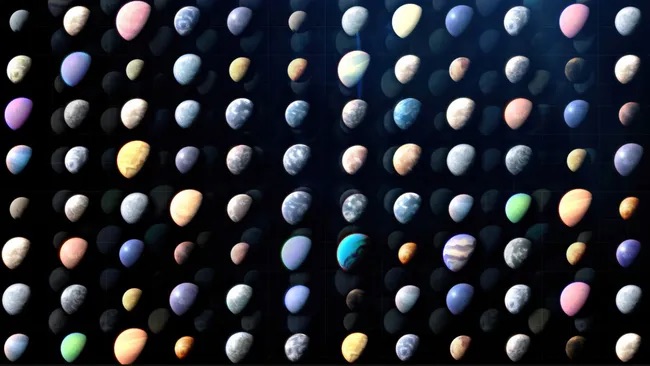Above: Artist rendering of confirmed exoplanets. Credit: NASA’s Goddard Space Flight Center
NASA has officially confirmed 6,000 exoplanets—planets that exist outside of our solar system—marking a major milestone in the search for worlds beyond our own. Tracked by NASA’s Exoplanet Science Institute at Caltech, the count continues to grow with more than 8,000 additional candidate planets awaiting confirmation.
Since the first discovery of a planet orbiting a Sun-like star in 1995, NASA missions have transformed our understanding of the galaxy, revealing a wide range of planets unlike anything in our solar system. Upcoming projects like the Nancy Grace Roman Space Telescope and the Habitable Worlds Observatory are expected to push this frontier even further.
Scientists have already identified planets with extreme and unusual traits: gas giants that orbit closer to their stars than Mercury, worlds covered in lava, planets lighter than Styrofoam, and even some with gemstone-filled skies. Beyond individual discoveries, the growing catalog allows researchers to compare entire populations of planets to those in our solar system, offering insights into how planets form and where Earth-like worlds may exist. As technology advances and missions expand, the pace of discovery is only expected to accelerate.
